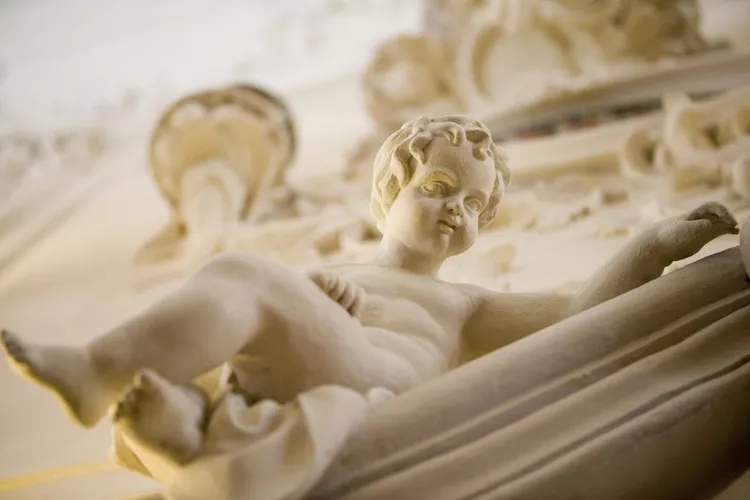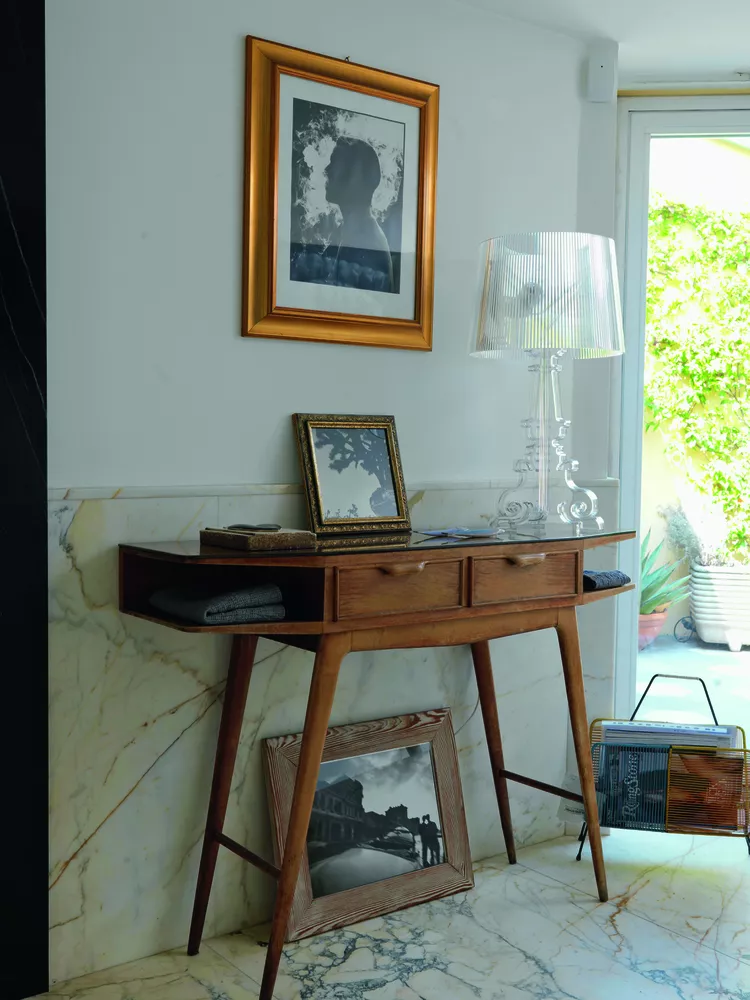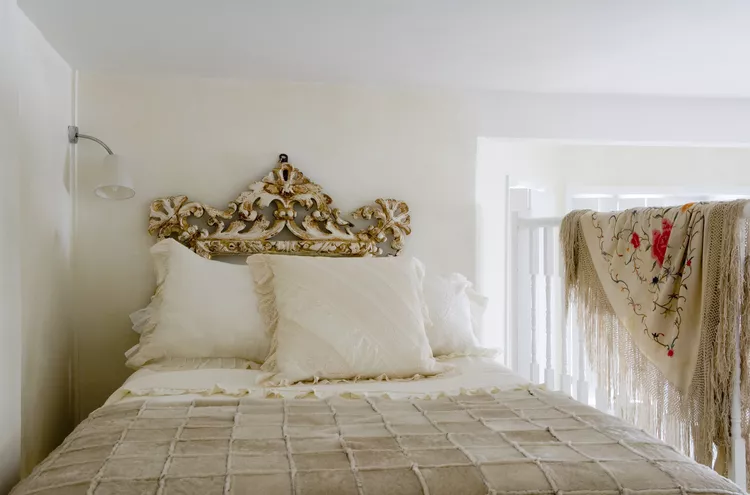
Baroque interior design refers to the style of decor that was used during the Baroque period of architecture, art, and design in the 17th and first half of the 18th century.
What Is Baroque-Style Design?
Baroque interior design is the style of decor style of the Baroque period of architecture, art, and design that developed in the 17th and first half of the 18th century in Italy and France.
This extravagant style included layered, formal, highly decorated interiors that included such elements as bronze sculptures; intricate tapestries; sculpted wood mirrors, moldings, and paneling; elaborately painted ceilings; crystal chandeliers; and gilded everything.

History of Baroque-Style Design
The Baroque movement started in Italy around 1600. It then spread to France, throughout Europe, and around the globe. Baroque was the first visual style to have a significant worldwide impact.1
Baroque-style interior design is part of the larger Baroque visual arts movement that spanned architecture, art, furniture design, objects, and more, with interior design, architecture, and art working together to create a cohesive visual statement.
Baroque style was an aesthetic exercise and a sensory demonstration of power—such as the highly decorative churches and cathedrals that the Catholic Church in Italy constructed to increase its dominance. In France, Louis XIV used a variation of Baroque style mixed with French Classicism as a kind of power branding for the monarchy. His interior designer Charles Le Brun took cues from the Sun King’s taste for all things gilded and desire to showcase his enormous power, resulting in the Château de Versailles, a monument to Baroque style that still shines today.

While Baroque style first emerged in Italy, it culminated in Rococo, (otherwise known as Late Baroque, or rocaille style) that developed in 18th-century Paris. Rococo’s ornate, over-the-top style was as a rebuke to the strict confines of French Baroque architecture and King Louis XIV’s strict ideas about what constituted art.
Baroque fell out of fashion in the mid 18th century, but appreciation for the style was revived in the 19th century. In the 20th century, acclaimed interior designer Dorothy Draper invented a popular style known as Modern Baroque, which was a bold take on the classics that used elements of bling, bright colors, and an updated take on Rococo detailing that became popularly known as Hollywood Regency. In the 21st century, contemporary Baroque mini revivals with nicknames such as Modern Romantic continue to come and go, even if today only the most eccentric contemporary interiors would feature full-on Baroque style.

Key Characteristics of Baroque-Style Design
- Baroque style is lavish, sumptuous, highly ornamental, and theatrical, with a flair for the dramatic and an undeniable sense of grandeur
- This aesthetic style was designed to appeal to the senses in order to provoke a heightened emotional response
- The overall style is characterized by its unapologetic use of bling, from sparkling crystal chandeliers to elaborately carved mirrors, to monumental furniture and decor pieces, to gilded finishes on everything from furniture to objects to walls
- French Baroque style may look like a riot of details and decorative elements, but it distinguishes itself with an underlying focus on symmetry and elegance informed by French Classicism

- Use of refined materials and techniques such as porcelain, lacquer, and wood marquetry
- Baroque interiors often feature spectacular painted ceilings that are often meant to create a trompe l’oeil effect of being open to the sky
- Use of carved moldings and ornamental details such as stylized natural motifs such as leaves, flowers, cherubs, human, and animal figures
- Shapes and forms are often curved and spiraled to create a sense of movement, such as scrolls of foliage

Modern Baroque Decorating Tips
Baroque style may seem out of step with modern decor, but it remains an influence for contemporary interior designers and home decorators alike, who often embrace a Baroque minimalist approach to incorporating the interior design style.
When incorporating Baroque-style elements into a modern decor scheme, a little bit goes a long way. A gilded Baroque-style Italian or French mirror or bed frame can provide a focal point in an otherwise modern room with neutral finishes and decor, or work as part of a more eclectic design scheme.

To inject some Baroque style into a modern room, incorporate contemporary pieces that are a playful riff on Baroque style. The best-selling Bourgie lamp designed for Kartell by Italian designer Ferruccio Laviani in 1994 is made from transparent polycarbonate, modeled after an antique lamp that the designer had on his desk. This ultra-contemporary reimagining of Baroque style traverses time and space and is surprisingly versatile.
For a more traditional take, choose Rococo-style furniture such as curvy velvet upholstered armchairs, slipper chairs, and skirted sofas.

This article offers a fascinating exploration of Baroque-style design, providing a comprehensive overview of its origins, characteristics, and influence on architecture, art, and interior design. I appreciate how it delves into the opulence, drama, and intricate details that define Baroque aesthetics, making it a timeless and iconic movement in the history of design. After reading this, I have a newfound appreciation for the rich heritage and artistic legacy of Baroque design.
Thank you for shedding light on the essence of Baroque-style design. The article beautifully captures the grandeur and extravagance of this iconic artistic movement, from its ornate decorations and elaborate motifs to its dramatic use of light and space. Learning about the historical context and cultural significance of Baroque design has deepened my understanding of its enduring influence on architecture and interior decor. Truly inspiring!
This article offers a fascinating exploration of Baroque-style design, providing readers with a comprehensive understanding of its characteristics and historical significance. The detailed description of Baroque elements, such as elaborate ornamentation, dramatic lighting, and opulent materials, helps readers visualize and appreciate the grandeur of this artistic movement. I appreciate the inclusion of examples from architecture, interior design, and art, which showcase the diverse applications of Baroque principles across different disciplines. Moreover, the discussion of Baroque’s influence on contemporary design trends highlights its enduring legacy and relevance in today’s aesthetic landscape. Overall, this article serves as an insightful introduction to Baroque-style design, inspiring readers to explore its rich history and incorporate its timeless elegance into their own living spaces.
As an enthusiast of art and design history, I thoroughly enjoyed this exploration of Baroque-style design. The article provides a well-rounded overview of the movement’s key characteristics, from its emphasis on grandeur and drama to its intricate detailing and dynamic compositions. I appreciate the inclusion of historical context, which helps situate Baroque design within its cultural and artistic milieu, as well as the analysis of notable examples from architecture and interior decoration. Additionally, the article effectively communicates how Baroque principles continue to influence contemporary design, underscoring its enduring appeal and relevance. Overall, this article serves as an engaging introduction to Baroque-style design, inviting readers to appreciate its beauty and complexity while fostering a deeper understanding of its cultural significance.
Baroque-style design is characterized by its ornate details, dramatic flair, and opulent aesthetics, evoking a sense of grandeur and extravagance that adds a luxurious touch to interior spaces.
Exploring Baroque-style design offers a glimpse into a rich artistic movement known for its lavish embellishments, intricate patterns, and rich color palettes, creating a timeless and regal ambiance in architectural and decorative elements.
Baroque-style design is characterized by grandeur, opulence, and intricate ornamentation, often featuring dramatic architectural elements, elaborate decorations, and rich color palettes.